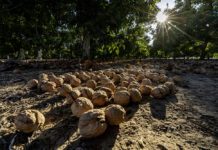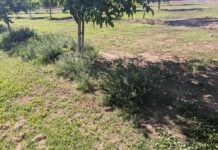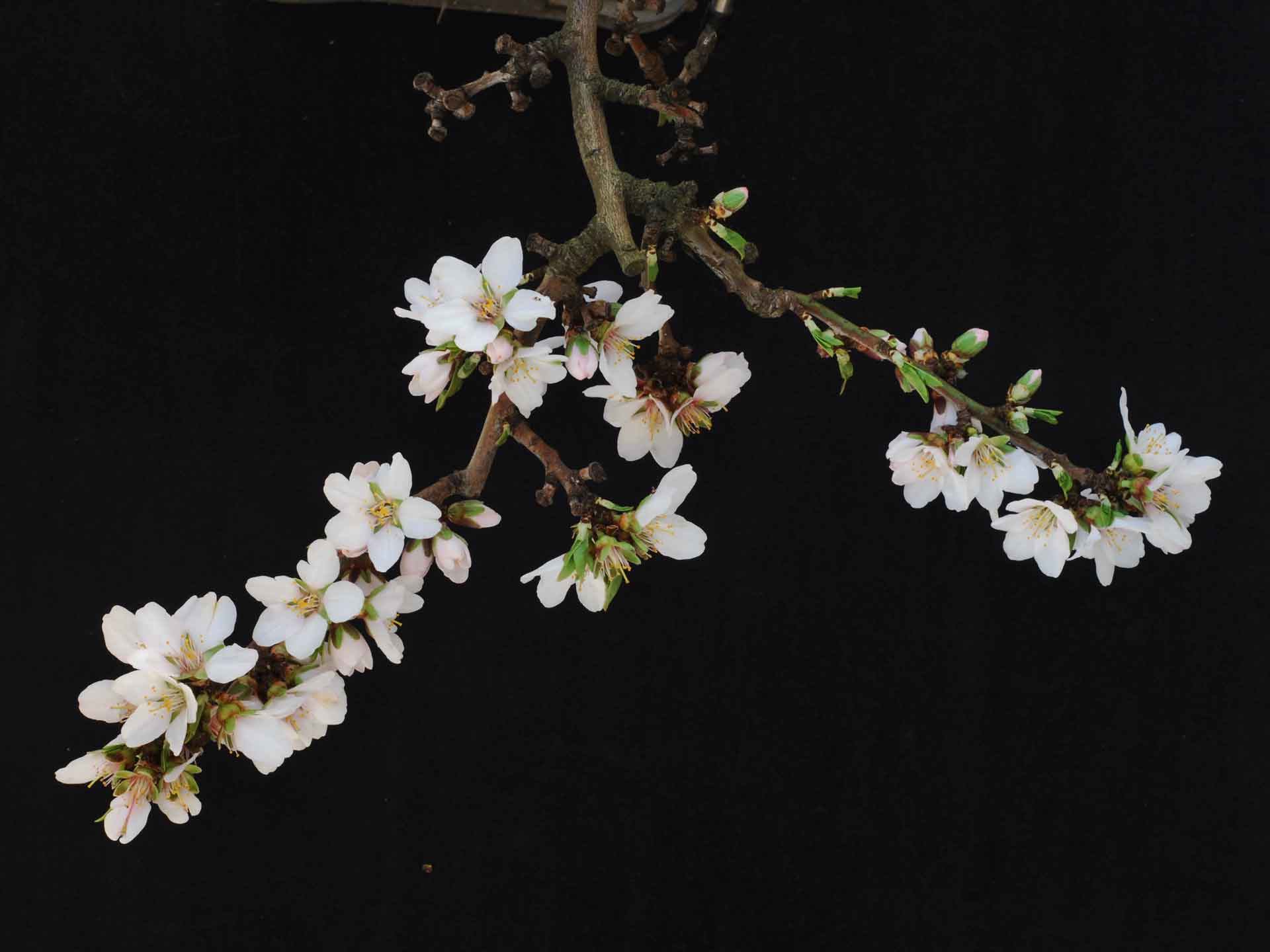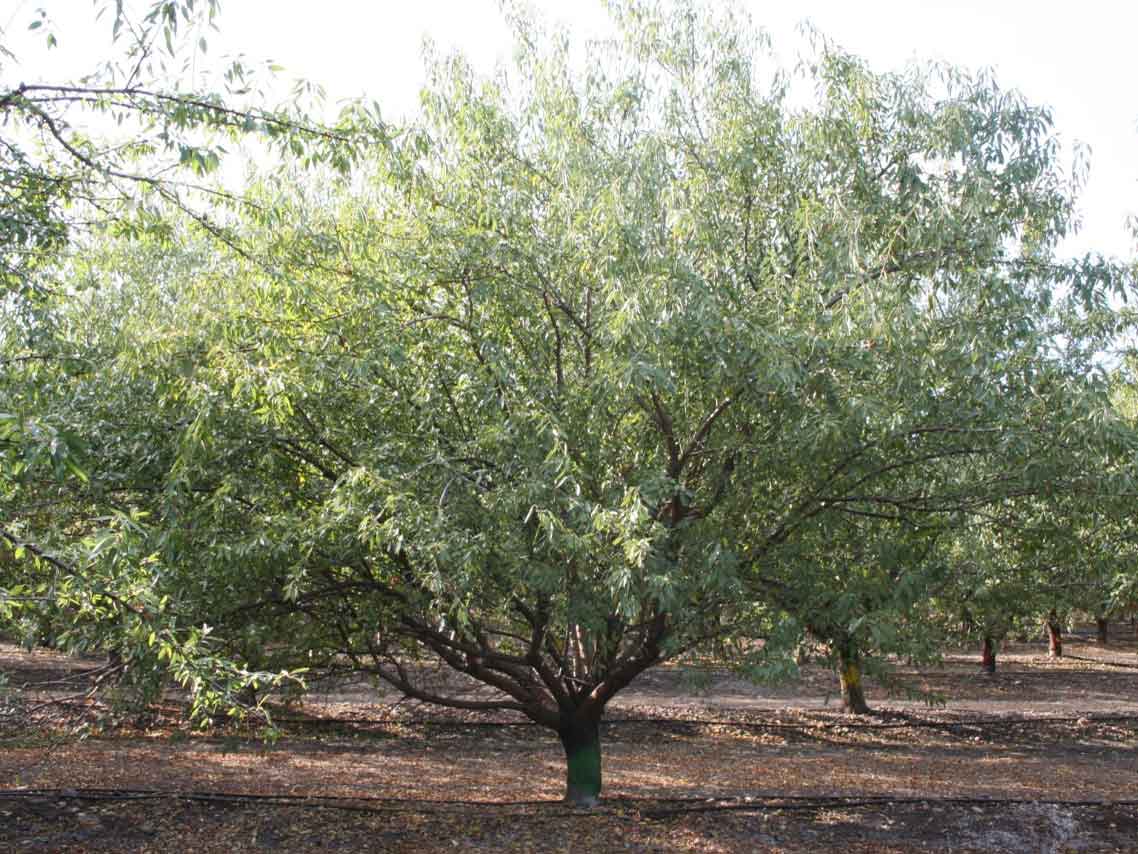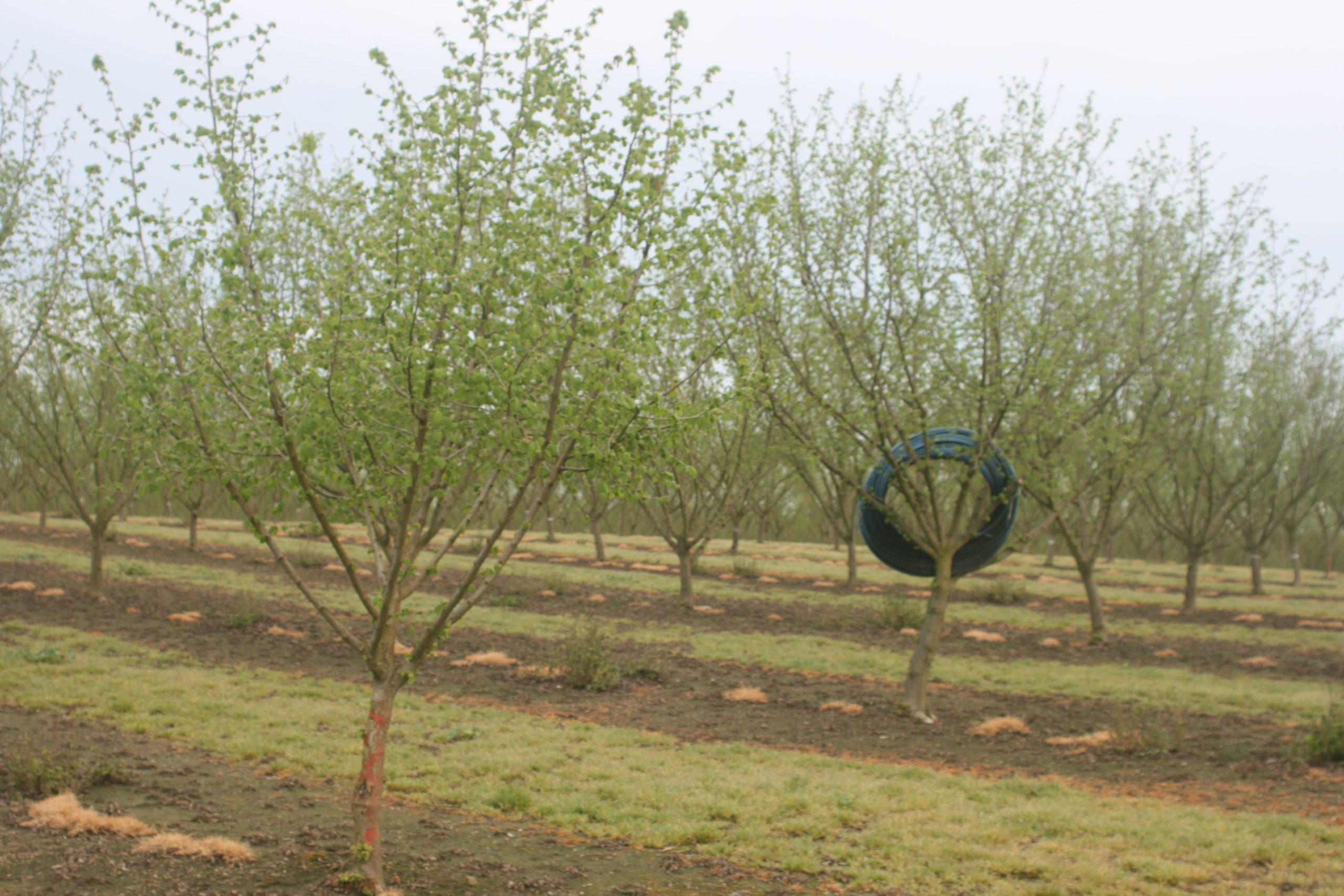
Speakers at the 53rd annual Tri-County Walnut Day in Tulare acknowledged the recent tough walnut market but stressed strategies to improve the bottom line with crop quality. UC researchers and walnut industry leaders provided walnut growers in Tulare, Kings and Kern counties with information on markets, crop protection and other tools necessary for maximizing walnut profits.
California Walnut Board and Commission Executive Director Robert Verloop said the industry challenge is to create more demand. California walnut growers did see better returns for the 2024 crop, he noted, as the carry-in was smaller than in previous years.
“We’re moving in the right direction” as acreage is starting to stabilize, Verloop said. The 2024 acreage summary showed 370,170 total producing acres.
Serhat Asci, from the agricultural business department at Fresno State, presented a look at international walnut markets. Globally, walnut production levels have fluctuated due to climatic conditions and market demand. U.S. walnut growers have one of the highest yields per hectare, Asci said, due to advanced farming techniques. Technological advancements and improved genetics are expected to enhance yields further.
China and the U.S. dominate the global walnut export market, but emerging exporters from South America are increasing competition.
Encouraging News
The encouraging news is an expected rise in demand from health-conscious consumers. Supply chain improvements will stabilize prices and enhance efficiency. There is also potential for increased mechanization in harvesting and processing, Asci said. Future trends in walnut production include expansion of production in emerging regions, greater emphasis on sustainability and environmental regulations, and digitalization in supply chain tracking and marketing.
Maintaining the U.S. walnut industry’s reputation for crop quality, researchers continue to improve crop protection tools. UC research entomologist Robert VanSteenwyk said a new pheromone lure has been developed to make early season trapping of walnut husk fly possible. Walnut husk fly has historically been a pest in the Northern California walnut-growing regions, but VanSteenwyk said it has been moving farther south, and growers in the southern San Joaquin Valley may occasionally need to treat for it. The new pheromone lure attracts walnut husk fly to sticky traps early in the season, helping growers track pest population levels and decide on treatment.
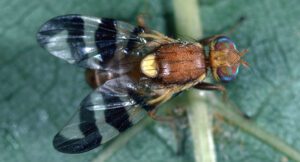
Quality Questions
More information on mold, a significant factor affecting walnut crop quality, was provided by UC researcher Themis Michailides, who has been studying management techniques.
Most mold in California walnuts is caused by species of Fusarium and Alternaria. The incidence of walnut mold was low in the 2023 crop compared to the 30% to 40% reported in 2018.
Michailides said infection of stigma by mold fungi and the stylar origin of fungal colonies causing mold suggests some mold infections can initiate at bloom. His trials showed inoculations with the fungal pathogens at bloom resulted in significantly more mold than non-inoculated control, and it was greater than the levels in subsequent inoculations.
He added the correlation of mold with hull rot and the similarity of causal fungi suggest if hulls were protected, lower levels of mold would be expected.
Mold levels in kernels in black-blighted nuts with intact, shriveled hulls were higher than in blighted nuts with partially split hulls, splits and green, normal hulls. Michailides said most black nuts with intact and shriveled hulls and some of the partially split hulls are removed in processing, resulting in yield loss. The more nuts with partially split hulls are hulled, the higher the risk for mold.
Michailides’ research in the last two years focused on determining if a bloom spray alone or in combination with walnut blight materials can reduce walnut mold compared to hull split sprays. He found that because a lot of mold begins at bloom, a bloom spray reduces mold in addition to reducing Botryosphaeria/Phomopsis control. Mold of hulls correlates with mold of kernels; thus, by reducing hull rot using hull split sprays, mold is reduced. A bloom spray (Luna Experience, alone or in combination with copper and Manzate) also significantly reduced Botryosphaeria-blighted nuts.
He added a spray with flutriafol (Rhyme) combined with ethephon reduced blighted (moldy) fruit by 70%. A spray with ethephon alone resulted in a significant 53% reduction in blighted and moldy nuts.
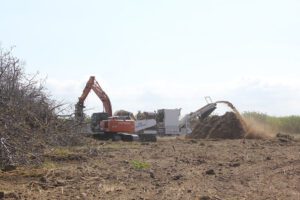
IGR Trials
The impact of dormant versus delayed dormant timing of insect growth regulator (IGR) control sprays for walnut scale was provided by Elizabeth Fichtner, UCCE farm advisor in Tulare and Kings counties.
Walnut scale infestations can open entry points for fungal infections and lead to the loss of fruiting wood.
Fichtner’s trials showed that dormant, mid-January IGR applications were superior to delayed dormant. Only delayed dormant IGR applications exhibited carryover efficacy to the following season, not crawler-stage applications. The one crawler-stage treatment that had evidence of multi-year control was Senstar, a combination of Movento and Esteem.
A phenology study found that in Tulare County, the first generation (late April to mid-May) provides the main population of crawlers.
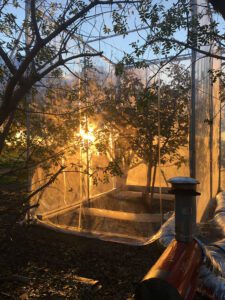
Advances in Walnut Breeding
Patrick J. Brown of UC Davis said the walnut breeding program is increasing genetic gain with DNA information. At four Walnut Improvement Program sites in 2023, variety entries on RX1 were selected for color stability and kernel yield. Notable findings with three years of data include some selections with high kernel yield appearing to have strong seals, and earlier maturing selections appearing to get less blight.
Trials in whole orchard recycling (WOR) continue in walnuts, with fertility and disease considerations. Brent Holtz, UCCE farm advisor in San Joaquin County, said larger trunk diameters, yield increases and higher levels of soil organic matter are resulting from WOR compared to orchard burning. Walnut WOR can produce up to 100 tons of wood chips per acre. There are challenges in spreading large amounts of wood chips and ensuring early nutrition after replanting.

Chilly Enough?
In early February, UCCE Orchard Advisor Kat Jarvis-Shean declared a “medium chill” type winter for walnuts.
With walnuts having one of the highest chill requirements for tree crops in California, there are some tools available to compensate for inadequate chill. In low-chill years, there is delayed bud break and uneven nut development.
“This is not a panic button for this winter, but it could be a year to try these tools,” Jarvis-Shean said.
She said many products have been shown to compensate for inadequate chill in other crops and countries but need to be tested for California conditions.
Over four years, she tested hydrogen cyanamide (Dormex), a blend of nitrogen compounds marketed as Erger, and calcium ammonium nitrate (CAN-17). Dormex is the only one of these products labeled for use as a dormancy breaker in walnuts.
The tented tree trials indicated that hydrogen cyanamide and CAN-17 were worth testing at a field scale.
Jarvis-Shean said the trials showed Dormex at 2% and 4% and CAN-17 at 20% could prompt heated scaffolds to behave as if they had received enough chill. Erger at 6% and CAN-17 at lower rates( 5% to 10%) only partially compensated for lack of chill. The research in heated trees showed Dormex at 2% often significantly increased the percentage of buds that opened on heated scaffolds.
These tools, applied at the timing and rates used in the trials, may not be suited for every orchard every year, Jarvis-Shean said. Applying dormancy-breaking treatments in optimal chill years may not warrant the cost. In low- and medium-chill winters, they have the potential to move up harvest timing for growers with significant Chandler acreage.

Cecilia Parsons
Cecilia Parsons has lived in the Central Valley community of Ducor since 1976, covering agriculture for numerous agricultural publications over the years. She has found and nurtured many wonderful and helpful contacts in the ag community, including the UCCE advisors, allowing for news coverage that focuses on the basics of food production.
She is always on the search for new ag topics that can help growers and processors in the San Joaquin Valley improve their bottom line.
In her free time, Cecilia rides her horse, Holly in ranch versatility shows and raises registered Shetland sheep which she exhibits at county and state fairs during the summer.







